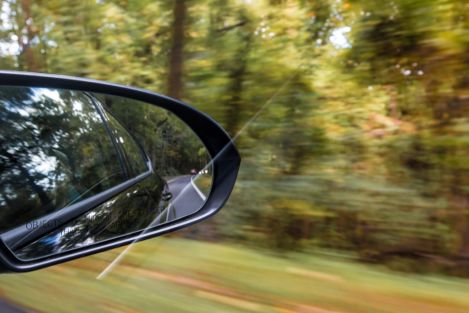
Written by Kayla Jane Barrie Updated on Dec 11, 2025 5 mins read

Car safety features are an important consideration when choosing a vehicle. Over the past few years, the number of vehicle safety features has ballooned. There is a lot more to choose from than airbags and anti-lock braking systems.
Are you in the market for a new vehicle? Looking for some aftermarket safety devices to improve your vehicle? Here we will outline the top safety features in vehicles today. Learn about mandatory car safety features and how they can affect your car insurance quote.
All vehicles in Canada must meet the Canada Motor Vehicle Safety Standards. Park assist, backup cameras, parking sensors, and other technology are all helping to improve road safety. However, they can also make it more challenging to know what vehicle package to choose when leasing or financing your next car.
While advanced safety systems in cars are often touted as a major safety improvement, the evidence suggests they do make a positive difference. Studies, like one by the Insurance Institute for Highway Safety, have shown that vehicles equipped with blind-spot monitoring systems experience a 14% lower crash involvement rate compared to their counterparts without the feature.
Here are the safety features in a car that are required by law in Canada.Vehicle safety features help reduce the risk of crashes. Unfortunately, they rarely lower insurance. The overall vehicle safety rating will have a bigger impact on lower policy costs.
Sometimes, advanced safety features can actually increase insurance premiums. Why? Advanced safety features and technology are more expensive to repair due to the sensors and electronics. This drives up the cost of a car insurance claim.
New vehicles have many safety features that can help prevent common accidents and make roads safer for all. Here are the top twelve vehicle safety features.
There are some aftermarket safety features you can add to your vehicle. Some can be done at home while others will need to be installed by a professional. Please note that you may require additional coverage to repair or replace these features in the event of an accident. Here are four safety features to consider adding to your car:
Although many new vehicles are equipped with more safety features than ever, there are five common safety features in a car include :
Active safety features are put in place to totally avoid an accident. In the event of a collision occurring, passive safety features are meant to activate and reduce the risk of injury during the time of impact. Active safety features include traction control, stability control, braking systems, advanced driver assist and collision warning. Passive safety features include seat belts, airbags, and overall construction of the vehicle.
Adding new car safety features can add thousands of dollars to the cost of a vehicle. Some are very helpful, while others are useful and fall into the nice-to-have category. You really need to determine if you will use them or not. They may or may not be worth it.
Car safety features lower the chances of an accident, but it does not mean you can ignore checking your blind spots and mirrors. They can help you stay safe and give you peace of mind and you have more protection.
| Categories | Auto |
|---|---|
| Tags | Driving TipsBuy and Sell Vehicles |
Read our insurance blog to get helpful tips, information and news.
Has your car been totalled in an accident? Is your car a write off? Learn about vehicle write offs for a total loss insurance claim.
Get the facts on Toronto's auto theft problem. We break down the data, reveal the most-stolen vehicles (including the Honda CR-V and Lexus RX 350), and show which neighbourhoods are most affected.
Dive into the world of auto theft with our blog on the most stolen cars in Canada. See the most stolen cars across Canada, including provincial lists for Ontario and Quebec, and learn how high-risk models can affect your car insurance premiums.
Drive safe this winter! Check out these tips for driving in snowy and icy conditions in Ontario. Get other helpful info and FAQs on winter driving.